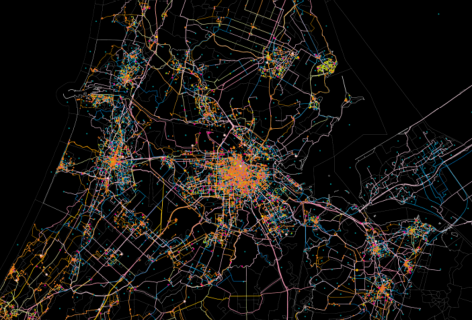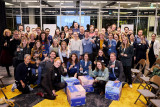REPAiR applies a geodesign approach including waste and resource management in order to reveal the local space-specific challenges of waste and resource management using life cycle analyses (LCA) and Urban Metabolism.
For more information about REPAiR click here.
What is the goal of the project?
The core objective is to provide local and regional authorities with an innovative geodesign decision support environment (GDSE) that will be used to create integrated, place-based eco-innovative spatial development strategies promoting the use of waste as a resource. The strategies produced using GDSE will support the ongoing initiatives of the European Commission towards establishing a strong circular economy (CE) in Europe.
What is the result of the project?
The project integrates life cycle thinking and geodesign to operationalize urban metabolism (UM). The UM concept is a framework for modeling complex urban systems’ material and energy streams as if the city were an ecosystem. UM describes the continuous flows of energy, resources, waste, information, and people into, out of, and within any given metropolitan area. It considers the area as interacting subsystems, permanently adapting to political, economic and natural environments.
REPAiR’s understanding of UM facilitates the shift to seeing waste as a resource while determining the implications of this shift and exploring ways to tackle it. Therefore, REPAiR does not focus on ‘end-of-pipe’ potential alone, but traces waste flows back to resource consumption patterns
REPAiR addresses five preliminary flow categories: construction & demolition waste, biowaste, post-consumer plastic waste, electrical waste and electronic equipment, and municipal solid waste. Along the project’s trajectory, other flows may emerge as priorities in each case study area, such as post-industrial waste or medical waste.
Who initiated the project and which organizations are involved?
Delft University of Technology is project leader of the REPAiR project. A consortium of the REPAiR project consists of 18 partners from 6 countries: Delft University of Technology (TUD), Ghent University, University of Naples Federico II, HafenCity University, Institute for Regional Studies HAS, Institute of Geography and Spatial Organization PAS, Joint Research Centre, Geo-Col GIS and Collaborative Planning, Delta Development Group, BIOKOM Nonprofit Ltd, Gertz Gutsche Rümenapp Stadtentwicklung und Mobilität GbR, OVAM – Public Waste Agency of Flanders, Municipality of Haarlemmermeer, Campania Regional Authority, Pheno Horizon, Bauer Umwelt GmbH, Ivago, Stadtreinigung Hamburg
What is the next step?
REPAiR organizes peri-urban living labs, where key actors, representatives of regions, municipalities, corporations, individuals, design professionals, information technologists, scientists and students collaboratively generate new ideas and strategies for the development of CE.
What can other cities learn from your project?
The choice of study areas is diverse enough to be representative for most European countries but also is able to test and validate whether the GDSE is flexible enough to be transferable to other contexts, and to detect limits of transferability. Three of the cases are characterised by high recycling rates and low rates of landfilling: Amsterdam (NL), Ghent (BE) and Hamburg (D). The key challenge there is developing a circular economy instead of incinerating waste or exporting it. The other 3 cases, Łódź (PL), Naples (I) and Pécs (H), with lower recycling rates and higher rates of landfills, face parallel challenges of increasing recycling rates and reducing illegal dumping on the way to a CE.
The wide array of characteristics within this set of cases makes them representative for many other European metropolitan regions.





